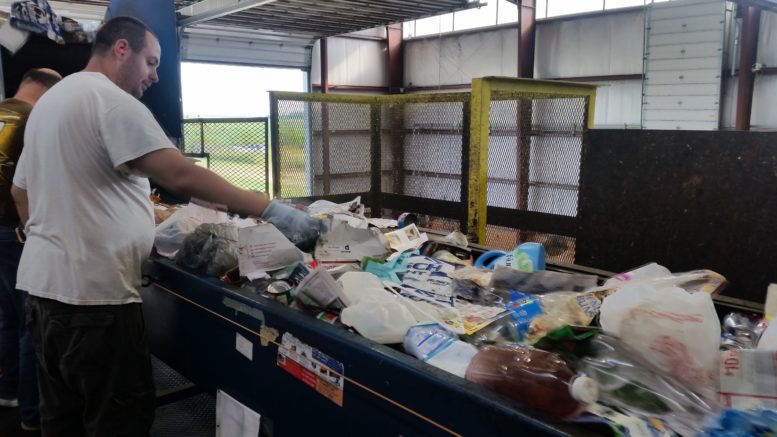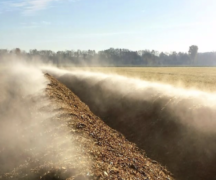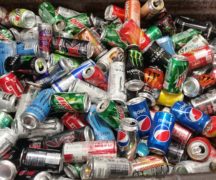By JAN LARSON McLAUGHLIN
BG Independent News
Bowling Green City Council has been urged to think “outside the landfill” as a way to save the city money.
Neocles Leontis, a Bowling Green State University chemistry professor, suggested last week during a council meeting that the city could reduce its general fund shortfall by thinking creatively about waste generated in the city. He spoke when council asked for public input as they debated options to shore up the city’s general fund after a series of funding cuts from the state.
Council members agreed the best option for raising $800,000 a year would be to start charging a fee for trash pickup.
Leontis urged them to be more creative in their thinking about garbage.
After meeting with Bowling Green Public Works Director Brian Craft about garbage statistics for the city, Leontis reported the city collects about 5,600 tons of garbage a year. Of that amount, about 12 percent is recycled – so about 5,000 tons end up being landfilled.
The landfill charges $39.30 a ton, so the city is currently saving about $25,000 a year through recycling.
Leontis suggested the city could do better – much better.
While the city improved its recycling rate a few years ago after investing in the larger blue recycling containers, the 12 percent recycling rate is relatively low, he said.
The average national recycling rate is about 35 percent, Leontis told council. If Bowling Green were to increase its rate to the national average, the city could save an additional $50,000 in landfill costs.
But why stop there, he asked.
“Why be average?”
He presented City Council with a pie chart showing the average components of Ohio municipal solid waste from a recent study, pointing out that potentially up to 75 percent of the waste stream could be recycled or composted.
Leontis’ conclusion was that Bowling Green could easily cut landfill costs in half while producing compost for agriculture.
He challenged the city to convince residents to be more thorough about recycling items. “They are not putting everything in there that they could,” he said.
Leontis’ comments prompted council to start discussing the possibility of lower trash fees for residents who generate less trash to be landfilled.
Since the new garbage fee will not go into effect until next year, council has some time to discuss options that may result in less trash going to the landfill.
Following is information from the Bowling Green Recycling Center about items that are accepted:
Not everything can be recycled– and not everything that can be recycled is collected curbside. For example the only plastic accepted for recycling by Bowling Green Recycling is plastic bottles and plastic jars. Some people put almost anything plastic in their recycling cart. If there is not enough volume and value, materials cannot be recycled. This is the case for plastic items that are not plastic bottles and jars.
Broken glass is a hazard to sorting personnel and it contaminates other recyclables so it is not accepted curbside. Glass, shredded paper (in bags), scrap metal and books can be brought to the 24 hour dropoff. Do not put these items in your recycling cart—they cannot be separated on the sorting line and are removed as trash.
Only items accepted curbside may be put in curbside carts.
Those items are newspaper, office paper (not shredded paper) magazines, cardboard, plastic bottles and plastic jars, aluminum cans and steel cans. The criteria for curbside collected material is high volume materials that can be safely and efficiently separated.





